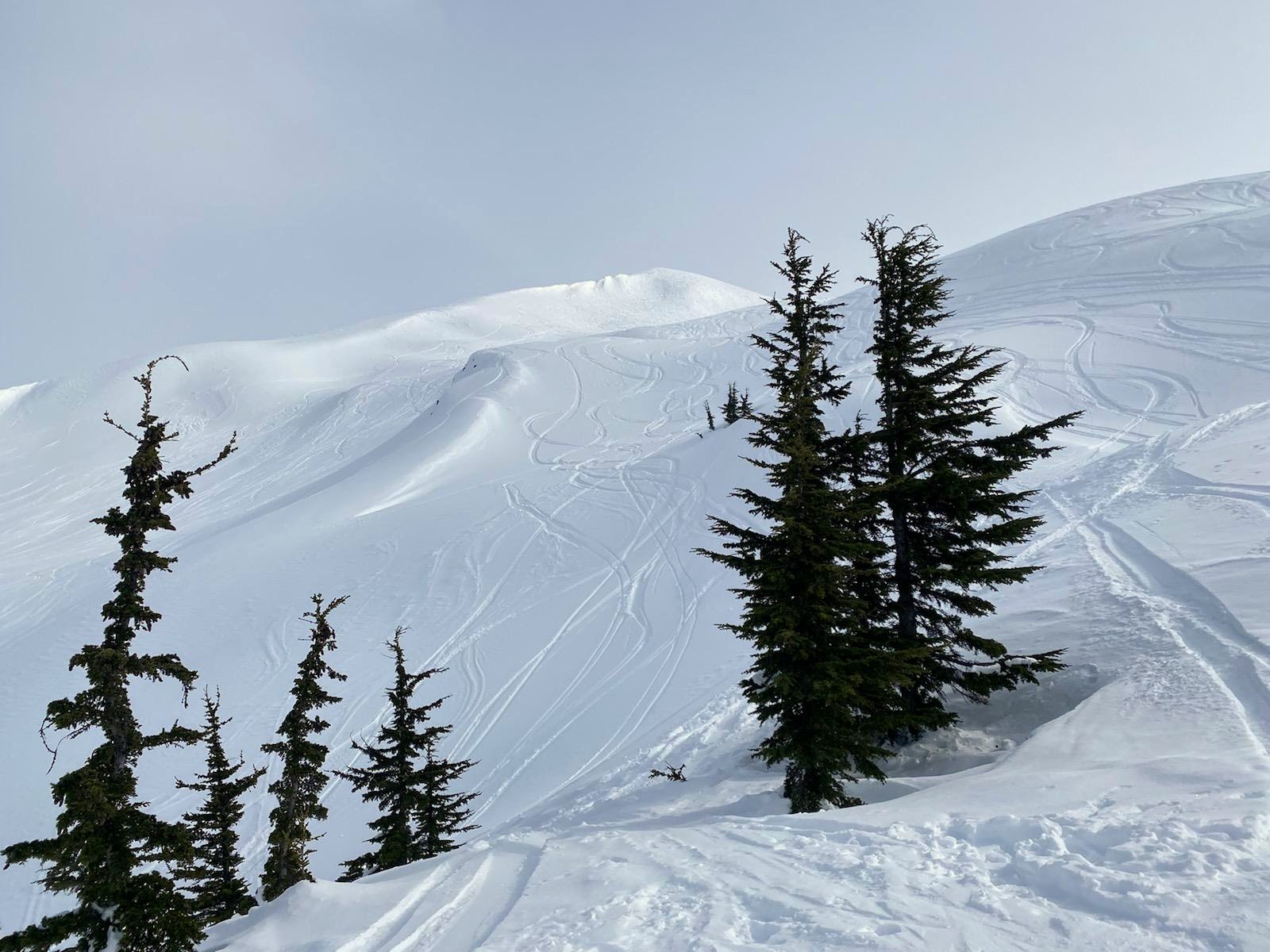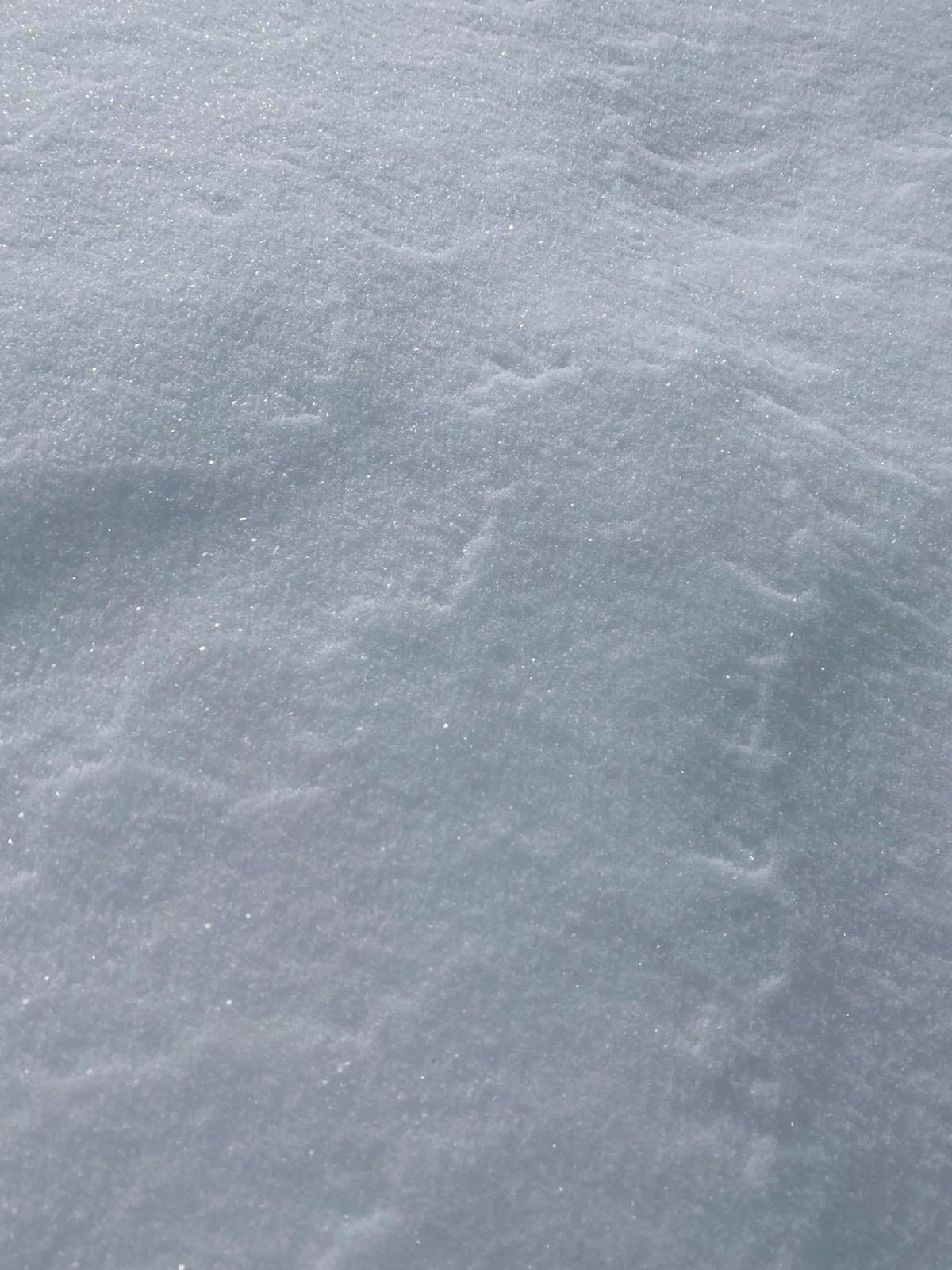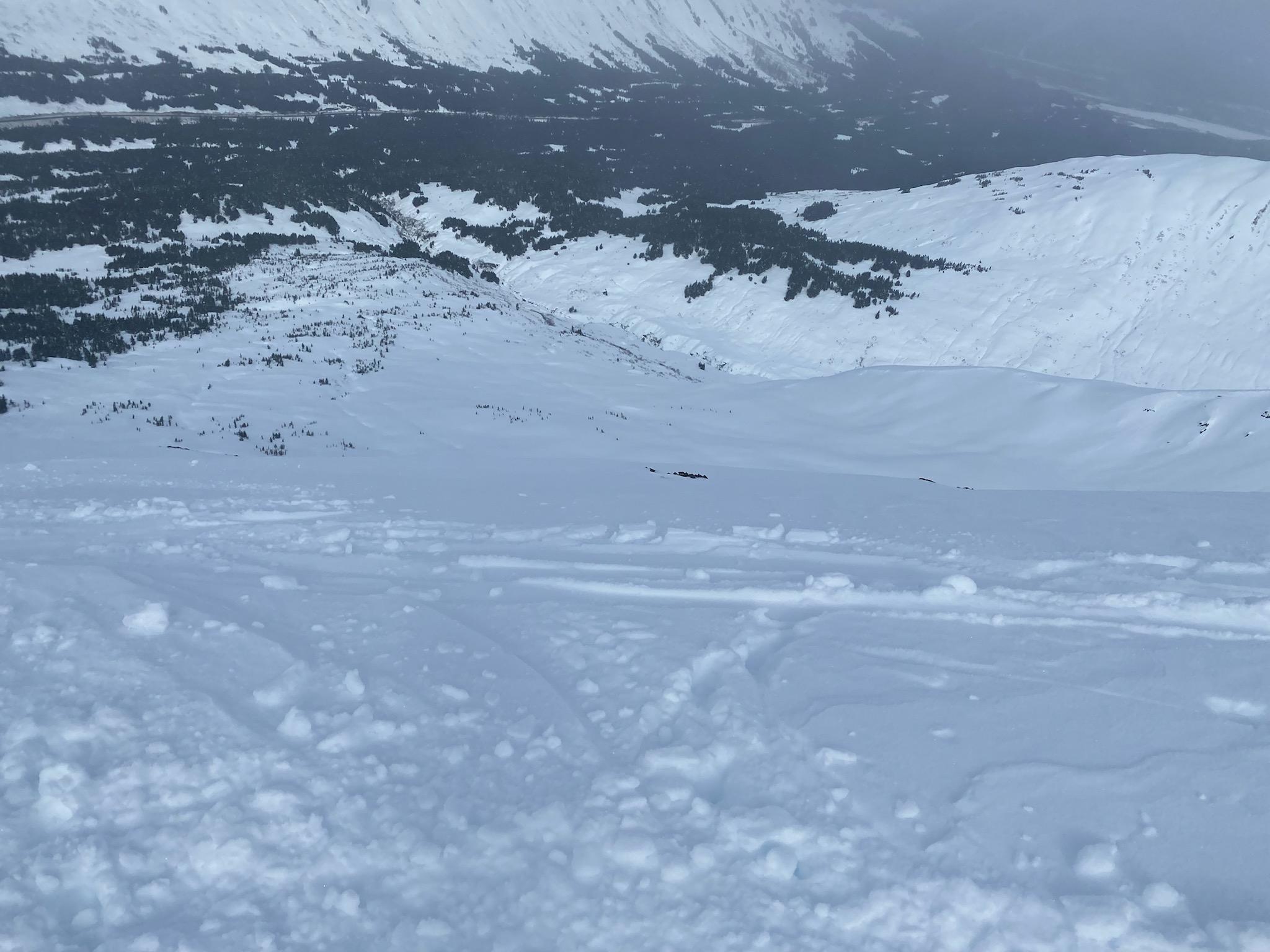Turnagain Pass
|
|
The avalanche danger remains CONSIDERABLE above 1000′ today. Human triggered avalanches 4-6′ deep are still possible and these very large avalanches can be triggered remotely from low angle terrain to the sides, below, or above steeper slopes. The potential for very large human triggered avalanches is driving us to keep the avalanche danger elevated even though the weather has been relatively quiet the last few days. Overnight a few inches of new snow and moderate winds built fresh wind slabs 6-12″ deep at upper elevations that are likely for human triggering today. We recommend continuing to adopt a conservative mindset by avoiding steep slopes and runout zones of larger avalanche paths.
The avalanche danger is MODERATE below 1000′ where human triggered avalanches are less likely.
Support the avalanche forecast with Pick.Click.Give!
Our Friends group funds 50% of our operating budget, forecaster salaries, and safety equipment to ensure professional, daily avalanche advisories all winter for the Chugach National Forest. The deadline is March 31, so follow these instructions today to support your daily avalanche forecast with your PFD. We thank you!



